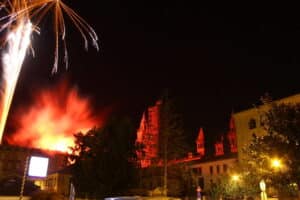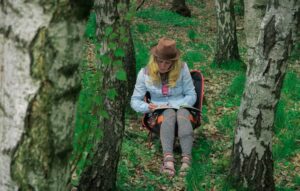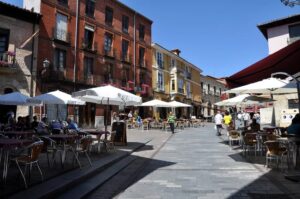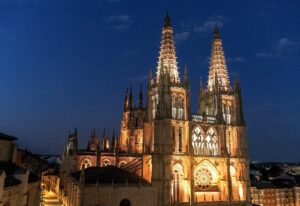
If you are planning to walk the Camino del Norte, there is one stop you should not overlook: Avilés. This Asturian town, full of history, character, and tradition, is much more than just a stopping point. For many pilgrims, it offers a breather between stages, a place to reconnect with the local culture and recharge surrounded by heritage beauty.
In this guide, we will tell you what to see in Avilés if you arrive on foot, which spots you should not miss, and how to make the most of your stay before continuing your journey towards Santiago.
Índice de contenidos
- 1 Avilés, a key point on the Camino del Norte
- 2 Discover the historical charm of the old town
- 2.1 Plaza de España: the heart of Avilés and a meeting point
- 2.2 A relaxing walk in the Parque de Ferrera, Avilés’ green area
- 2.3 Calle Galiana: a journey through history and local tradition
- 2.4 Plaza del Carbayedo: cider tradition and festive atmosphere
- 2.5 Church of San Nicolás de Bari: A medieval architectural treasure
- 2.6 Niemeyer Centre: an international cutting-edge cultural icon
- 2.7 Sabugo and the Old Church: maritime roots and historic architecture
- 2.8 Palace of Camposagrado: noble elegance in the centre of Avilés
- 2.9 Fountain of the Caños de San Francisco: a historic symbol of Avilés
- 3 Festivals and gastronomy in Avilés: tradition to taste and celebrate
Avilés, a key point on the Camino del Norte
As you may know, the route of the Camino del Norte is one of the oldest and most spectacular Jacobean paths. This itinerary, which runs along the entire Cantabrian coast from Irún to Santiago, crosses landscapes of unique beauty: cliffs overlooking the Cantabrian Sea, wild beaches, well-preserved historic centres, and rural villages full of authenticity.
Indeed, one of the main virtues of this route is that it is perhaps the most diverse of all the ways to reach Santiago’s Cathedral.
- For example, the Camino Santiago from Bilbao to Santander stands out for combining large urban centres with coastal rural sections and hidden coves. It allows you to experience the contrast between contemporary culture and wild nature.
- While on the Ribadeo Camino de Santiago, you’ll find peaceful villages, rolling green landscapes, and authentic hospitality. Additionally, from this point onwards, the route becomes more introspective, with fewer gradients, ideal for connecting with the environment and enjoying the final stretch to Santiago.
Camino del Norte or another route? A comparison
without losing your way
- Camino del Norte: ideal for those seeking a varied, demanding experience in direct contact with nature. The route crosses beaches, cliffs, forests, and old town centres, with less crowding and a more mountainous profile than other routes. Perfect for those who enjoy physical effort and changing landscapes.
- Camino Francés: the most popular and busiest route, with an extensive network of services. It is a good choice for first-time pilgrims or those who wish to share the journey with many other walkers. Its cultural diversity and monumental richness are its main attractions.
- Camino Portugués: the Camino from Tui to Santiago stands out for its accessibility, natural beauty, and strong symbolism. It crosses the Miño River and enters Galicia through lush forests, historic towns, and well-marked paths. It is highly recommended if you have less time but still want an authentic and spiritual experience.
- Camino Primitivo: considered the oldest of all, it connects Oviedo with Lugo and is characterised by its physical toughness and strong historical significance. Crossing the Cantabrian Mountains requires preparation, but the reward is immense in terms of landscapes and solitude.
- Camino Inglés: a short but intense route, with well-defined stages and an ascending profile that crosses areas of great rural beauty. Ideal if you have few days and are looking for an intimate, less crowded experience.
Whichever route you choose, opting for an organised Camino de Santiago trip can help you focus on what truly matters: experiencing the Camino. Having route assistance, luggage transfer, reserved accommodation, and personalised advice makes a big difference, especially if it is your first experience as a pilgrim or if you have limited time.
Discover the historical charm of the old town
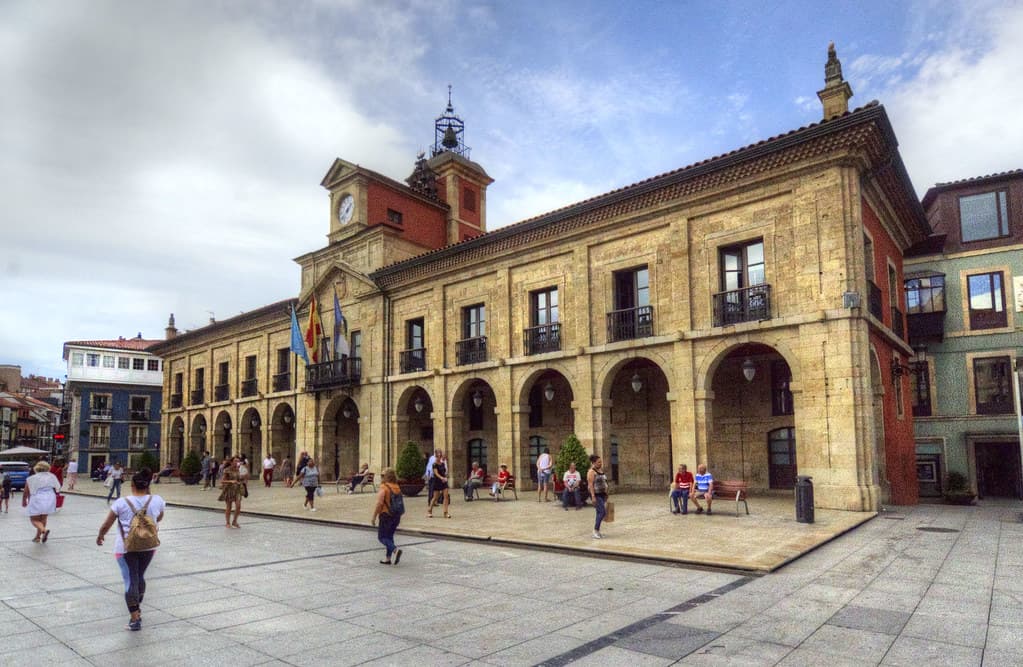
One of the main attractions is the historic centre. As you stroll through, you will notice that most of the buildings have been preserved from their original construction. Avilés has withstood the passage of time like no other place in Asturias. Close your eyes and imagine yourself in the Middle Ages or during the Golden Ages.
This historic centre stands out as one of the most interesting in northern Spain. Its ancient buildings and authentic streets are remarkable, many with arcades that form cloisters in the heart of the town. This area has the largest porticoed space in Asturias.
The Plaza del Ayuntamiento is in the heart of the town. From here, the most important streets begin. The Galiana Street (which we will talk about next), Rivero, La Ferrería, and La Cámara will be etched in your memory. We also highlight the Valdecarzana Palace and the Romanesque church of the Franciscan Fathers.
Plaza de España: the heart of Avilés and a meeting point
The Plaza de España is the central point. Six of the most important streets in the town converge here. In this place, all roads lead to Plaza de España, just like in Rome. The Town Hall with its eleven arches stands out. The Palacio del Marqués de Ferrera is also here, now the luxurious Hotel Palacio de Avilés.
A relaxing walk in the Parque de Ferrera, Avilés’ green area
After walking down Galiana Street, relax in the Parque de Ferrera, one of the most beautiful parks in Spain. This large green space, in English style, belonged to the Marquessate of Ferrera from the 15th century until it became a public park.
It has a large grassy area, trees, a music kiosk, and a French-style garden. Scenes from the film *Vicky Cristina Barcelona*
by Woody Allen were shot in this garden.
Calle Galiana: a journey through history and local tradition
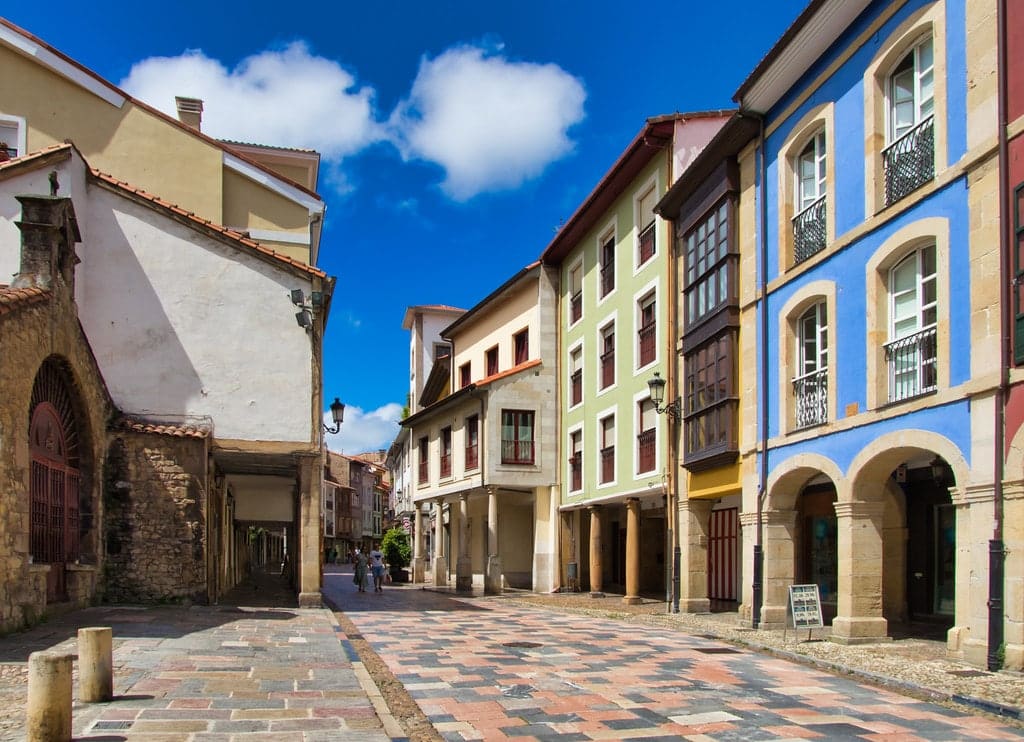
The Calle Galiana is one of the most emblematic streets in the area. Its arcades and colourful houses transport you to another era. This street is known for its lively atmosphere, with cider houses and traditional shops. It is the perfect place to enjoy local cuisine and the vibrant atmosphere of the town.
Plaza del Carbayedo: cider tradition and festive atmosphere
The Plaza del Carbayedo, located at the end of the emblematic Calle Galiana, is one of the most joyful and representative spaces. Famous for its festive atmosphere and close connection with the Asturian cider tradition, it is definitely an ideal place to enjoy a good cider outdoors.
The most striking feature is the hórreo that dominates the centre of the square, a typical Asturian rural construction, which is quite unusual in an urban setting. Next to it, a children’s playground adds a family-friendly touch, making this square a meeting point for both locals and visitors.
Church of San Nicolás de Bari: A medieval architectural treasure
The Church of San Nicolás de Bari, dating from the 13th century, is an architectural gem. Its Gothic style and imposing façade invite you to discover its interior, where you’ll find priceless works of art and historical elements. This temple has become a symbol of the rich religious heritage.
Niemeyer Centre: an international cutting-edge cultural icon
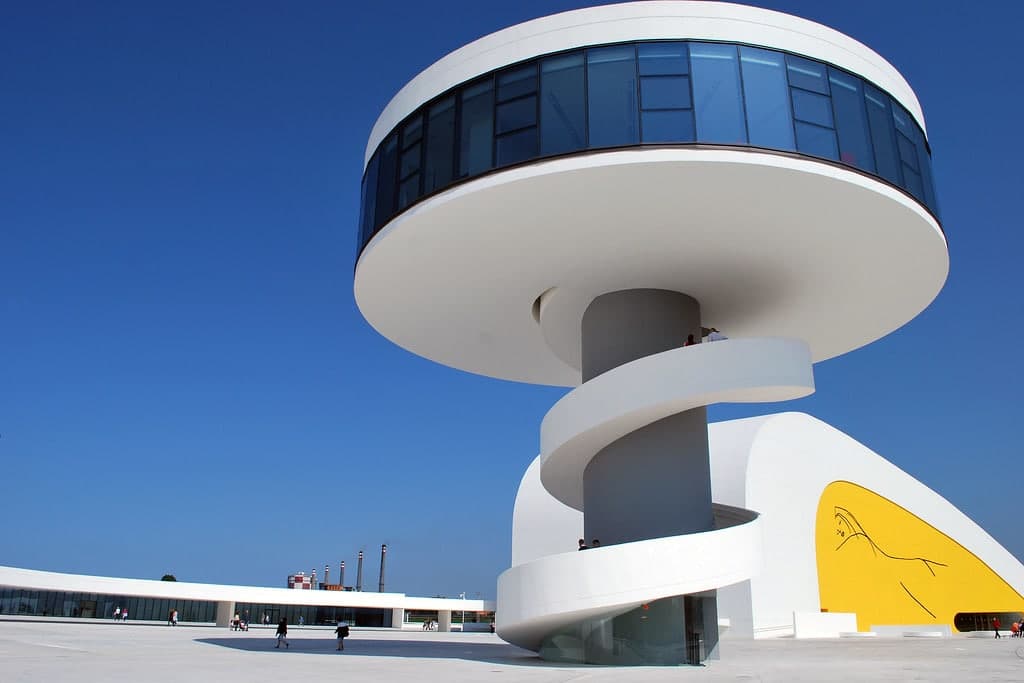
The Niemeyer Centre, designed by renowned Brazilian architect Oscar Niemeyer, is one of the most prominent cultural landmarks in the town. Its modern design with curved lines offers a strong visual contrast with the traditional surroundings of the historic old town.
This multifunctional space hosts a wide range of activities including exhibitions, performances, conferences, and other high-level cultural events. It is a regular meeting point for artists, thinkers, and visitors from various countries. A symbol of modernity, creativity, and cultural openness in the heart of Asturias.
Sabugo and the Old Church: maritime roots and historic architecture
Sabugo is an old fishing district. Here you’ll find the Plaza del Carbayo, the Old Church of Sabugo, and the Mareantes table, where fishermen and captains would gather. Pedro Menéndez requested funding at this table to sail to America and founded St. Augustine of Florida. The city’s growth led to the construction of the aforementioned sanctuary.
Palace of Camposagrado: noble elegance in the centre of Avilés
The Palace of Camposagrado is an example of noble architecture in Avilés. Its imposing façade and coat of arms transport you to the city’s period of splendour. This palace has witnessed important historical events and is a symbol of the power of the region’s noble families.
Fountain of the Caños de San Francisco: a historic symbol of Avilés
The Fountain of the Caños de San Francisco is one of the most representative elements of Avilés’ historical heritage. Built to channel drinking water and prevent diseases during times when hygiene was a major urban challenge. This fountain plays a key role in the city’s sanitary history.
Its design, simple yet functional, reflects the utilitarian architecture of the time. Over the years, it has remained a symbol of local identity, preserving its historical and cultural value.
Festivals and gastronomy in Avilés: tradition to taste and celebrate
If your visit to Avilés coincides with one of its festivals, get ready for an unforgettable experience.
The town celebrates the famous Antroxu, its carnival, considered one of the most important in Asturias. Declared a Festival of Tourist Interest, it transforms the historic centre into a parade of colour, music, and costumes. During Holy Week, the processions wind through the historic streets with solemnity and beauty, showcasing the devotion and sacred art of the area.
In the summer, events such as the Interceltic Festival, with music, gastronomy, and Celtic tradition crafts, and the Fiestas de El Bollo during Easter, stand out. Here, the traditional mantecado buns become the stars, accompanied by street parades, concerts, and a lively atmosphere in every corner of the city centre.
And when it comes to food, Avilés also leaves a mark on the palate. In any cider house or eatery, you can taste typical dishes such as fabada asturiana, pote, or cachopos, all served with a good cider poured in the traditional style. Don’t forget to try the seafood and fish from the Cantabrian Sea, fresh and prepared simply to enhance their natural flavour.


